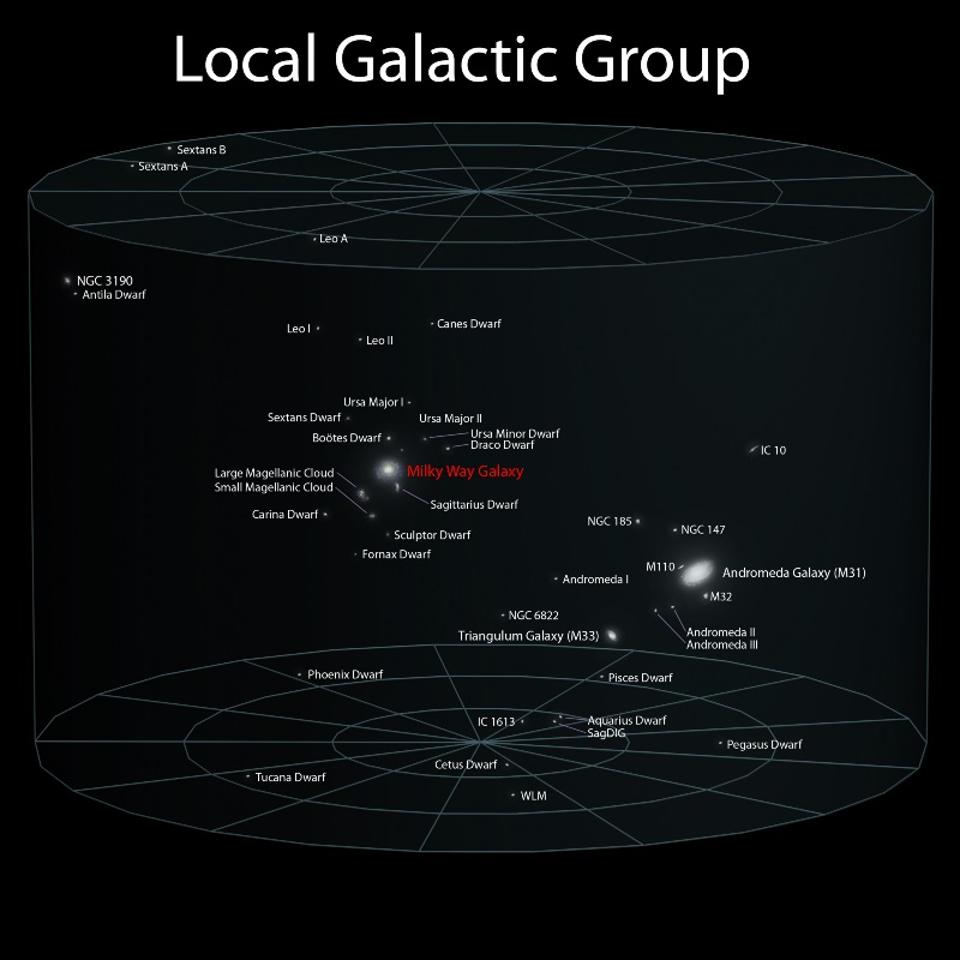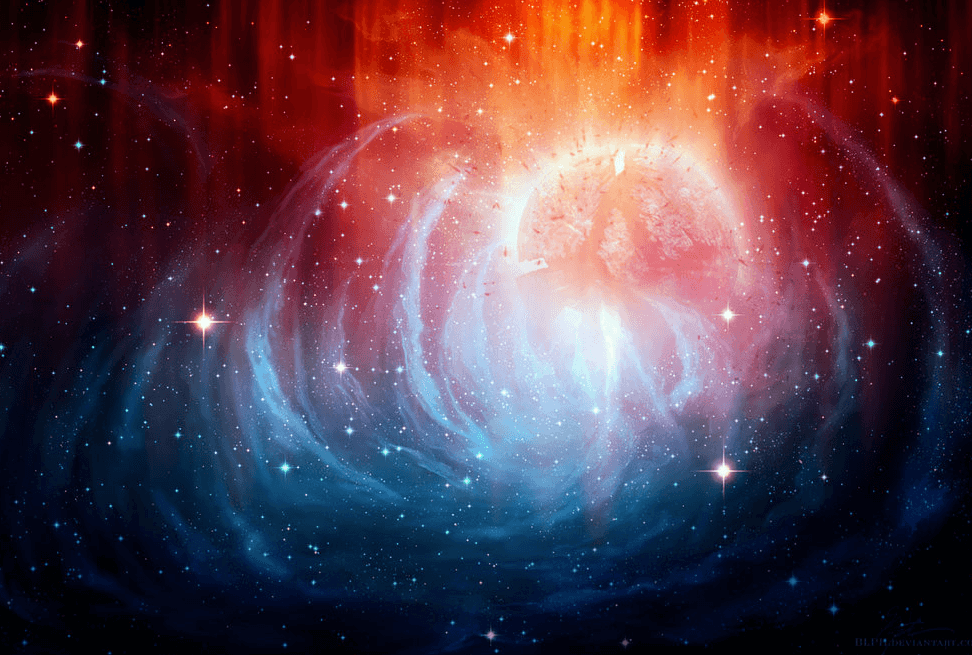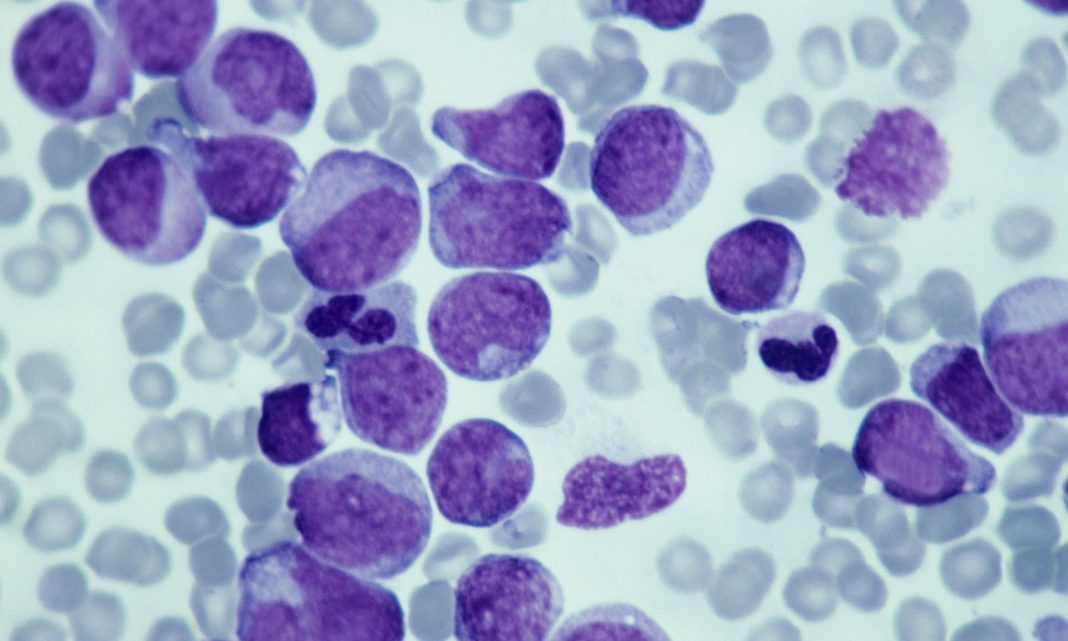Every galaxy has a life cycle, though unimaginably long, even the Milky Way, which has already existed in it’s current state for billions of years. For our most immediate surroundings, our solar system, there is at least a billion years before the Sun heats up, transforms into a red giant, boiling away the Earth’s oceans and making the planet uninhabitable. Sometime after that, the helium of its core will fuse, the Sun will shed its outer layers, then finally shrink into a white dwarf. Although that may be the end of our recognizable area, our galaxy is vast and there will be new stars and plenty of life elsewhere across the expanse of the Milky Way but even that too will change. One day, our corner of the universe will be completely unrecognizable and eventually it will be gone forever.
Since so much of our galaxy’s future is dependent on the galaxies closest to us, let’s get to know our cosmic neighbors. While the Milky Way and Andromeda are the heavy hitters, our local group includes up to 45 other relatively unknown galaxies. Here’s only a few.
—The Triangulum galaxy.
Having the mass equivalent of 5% that of the Milky Way’s the Triangulum galaxy has a similar spiral structure. It has its own satellites and itself may be a satellite of Andromeda. Not only is it the third largest local galaxy it is also the most distant visible object seen with the unaided eye.
— The Large Magellanic Cloud.
One of the closer galaxies, barely 200, 000 light years from us, the Large Magellanic Cloud is close enough to be affected by galaxy tidal interactions. Because of these interactions, it is going through a series of new star formations, with gas collapse creating large, hot, young stars. Comparatively the Large Magellanic Cloud is a featherweight at only 1% of our mass but it ranks at the fourth largest of the local galaxies.
—The Small Magellanic Cloud, NGC 3190, and NGC 6822
Located in the Large Magellanic Cloud, the Small Magellanic Cloud and galaxies NGC 3190 and NGC 6822 are all more than a billion solar masses, making them between 0.1% and o.6% the size of the Milky Way.
—Galaxies M32 and M110
Elliptical in shape, these galaxies are considered satellites of Andromeda, but may yet be bigger than NGC 3190 or NGC 6822, with over a billion stars each.
That handful of galaxies, plus Andromeda, the Milky Way and 40 or so other known galaxies make up our local group, or cosmic neighborhood, of galaxies. Each is surrounded by a halo of dark matter and bound by gravity. Despite spanning about 3 million light years and countless solar masses, one day in the distant future none of it will exist. Here’s how that might happen.
During the next 2 or 3 billion years, the gravitational bonds that keep the galaxies of our local group linked together will transform them into something different. As each one is pulled closer together by this effect, smaller galaxies drifting close to larger ones will get pulled more strongly in one direction, while the side further away may get pulled differently, eventually tearing the small galaxy apart. In the end, a lot of the smaller galaxies materials will become a property of the large galaxy, meaning in the future both Magellanic clouds and the dwarf galaxies may all be part of Andromeda or the Milky Way itself. Known as a galaxy merger, these sort of gravitational interactions are commonplace.

Over time, say 4 billion years or so, even the large galaxies, Andromeda and the Milky Way, will start to merge. The gravitational attraction between the two will stretch out the spiral shapes. Some stars will be ejected, while new ones will form in the process. Taking billions of years to finish, the destruction, birthing, and merging will continue until there is only one massive elliptical galaxy left, Milkdromeda.
Even that galaxy won’t last as it is when the other galaxies in our cosmic neighborhood will eventually draw into this massive Milkdromeda galaxy. And these same type of mergers will be happening all across the Universe as dark matter and gravity take their toll on other galaxies, stars, and gas clouds. However, all of these things are finite and have their own lifespan that will end too.
Hundreds of billions of years into the future, a time so distant it’s difficult to imagine, the fuel of matter that allows stars to shine brightly and create new stars will be used up. Ten trillion years from now, new stars created will be smaller and dimmer until they are nonexistent altogether. In a quadrillion or so years, the last of the neutron stars and white dwarfs will fade out, leaving brown dwarfs alone. Occasionally these failed stars may crash into one another, relighting with nuclear fusion and burning for ten trillion years themselves.
When those go, now tens of quadrillions years (10^16) into the future, the Universe will be dark and look lifeless but it will not be empty, not truly dead yet. The masses left behind will still have gravitational interaction, sometimes with a strange effect.
As the masses pass near each other, if they are of different sizes, changes of velocity and directionality can pass between them, kicking lower masses out of the galaxy as the heavier ones fall closer to the center of the galaxy, losing velocity, a process known as violent relaxation. As this reaction happens throughout the galaxy and over time, by 10^20 years has passed, a significant portion of our cosmic neighborhood’s mass will be ejected, leaving a small percentage of mass remaining, tightly bound in the center.
In the center of these galactic remains is a supermassive black hole. Objects will orbit around them, all dark, like an inverse and enormous version of our current Solar System. The black hole at the cent of Milkdromeda could be a hundred million times larger than the Sun, larger galaxies elsewhere have black hole centers equivalent to ten billion solar masses or more. These will be the last vestiges of the galaxy, dark and massive, but these too will not last.
Finally, in 10^80 to 10^100 years, our supermassive black hole will go away due to Hawking radiation. Whatever remaining matter there is left will no longer be bound by gravity and will drift away. The area where our Local Group uses to be will only house a circle of dark matter which may or may not disappears itself eventually. That is what the death of the Milky Way and all the other galaxies may look like in the faraway future.
More News to Read











